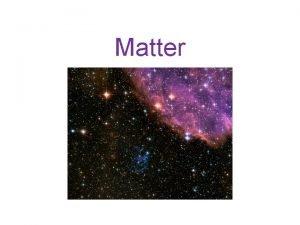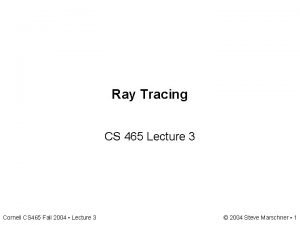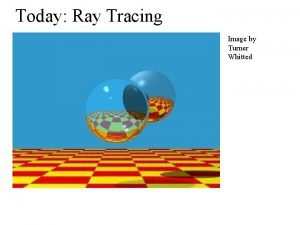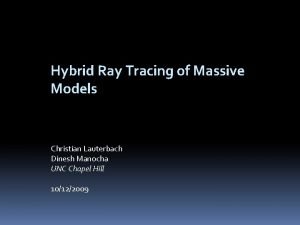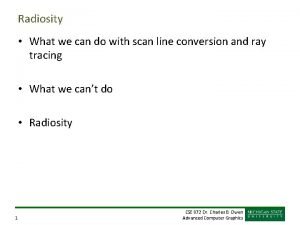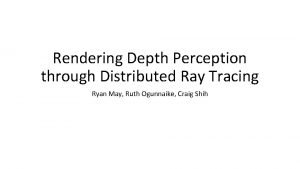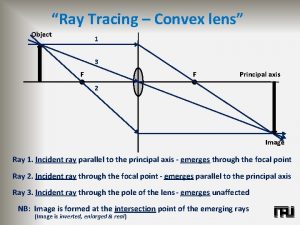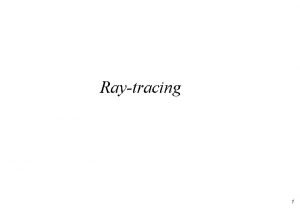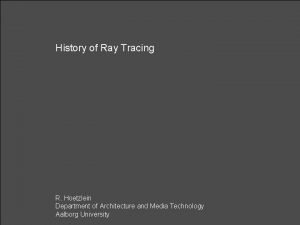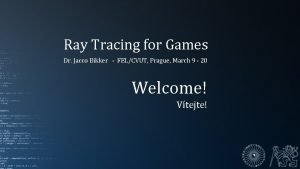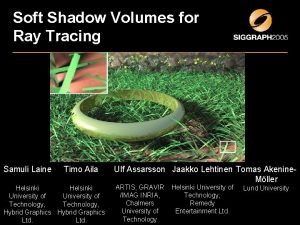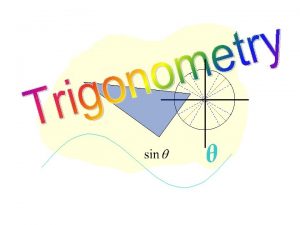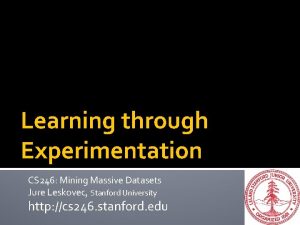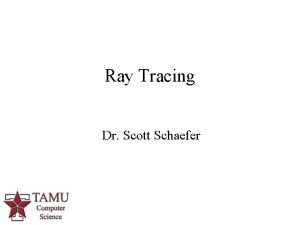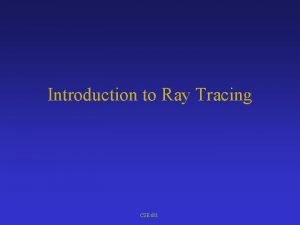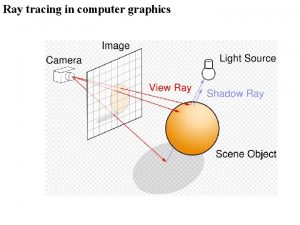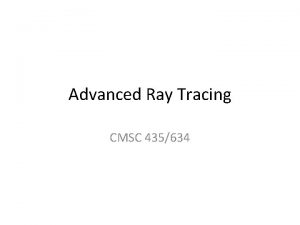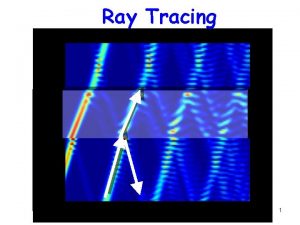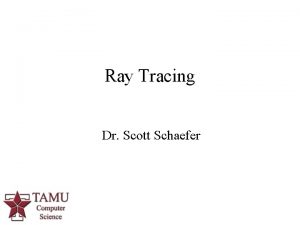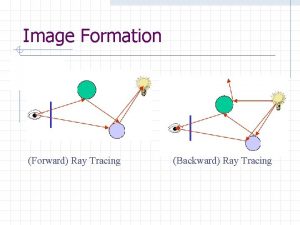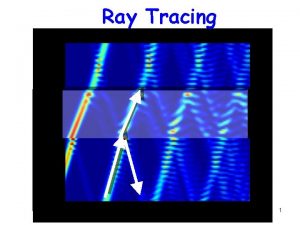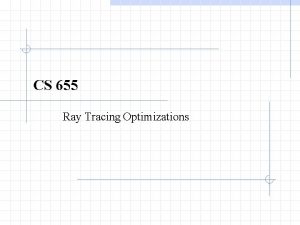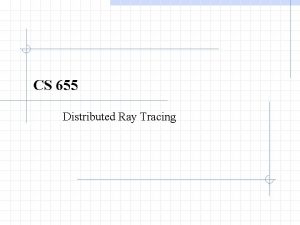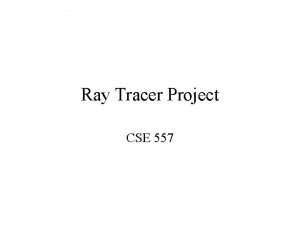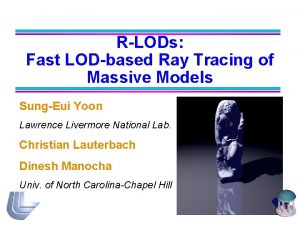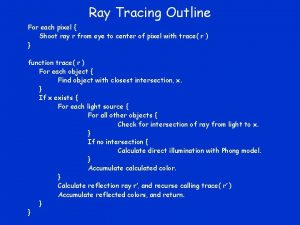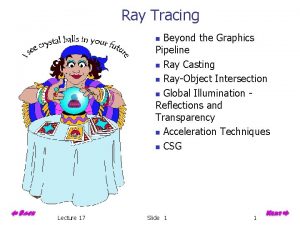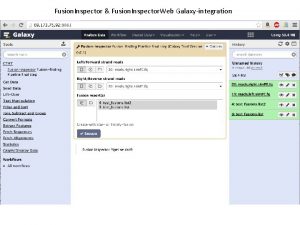Massive Ray Tracing in Fusion Plasmas on EGEE


























- Slides: 26

Massive Ray Tracing in Fusion Plasmas on EGEE J. L. Vázquez-Poletti, E. Huedo, R. S. Montero and I. M. Llorente EGEE User Forum 1 st - 3 rd March, CERN (Geneva) Distributed Systems Architecture Group Universidad Complutense de Madrid (Spain)

What are we going to see? MA-RA-TRA/G: a computational view Execution using the LCG-2 Resource Broker Execution using the Grid. Way Meta-Scheduler Comparison Conclusions “Our two cents”

MA-RA-TRA/G: a computational view MA-RA-TRA/G activity: “Massive Ray Tracing in Fusion Plasmas on Grids” Application profile: – Sizes Executable (Truba) – 1. 8 MB Input files – 70 KB Output files – about 459 KB – Execution Time – about 26 minutes Pentium 4 (3. 2 GHz) – 1 execution = 1 ray traced

Execution using the LCG-2 Resource Broker lcg 2. 1. 9 User Interface C++ API 1 job = 1 ray Procedure: – Launcher script Generates JDL files – Framework over LCG-2 Launches them simultaneously Queries each job's state periodically Retrieves each job's output (Sandbox)

Execution using the LCG-2 Resource Broker Launcher generates JDL gets MRT launches queries state Job retrieves output

Execution using the LCG-2 Resource Broker SWETEST VO

Execution using the LCG-2 Resource Broker

Execution using the LCG-2 Resource Broker Total Time: 220 minutes (3. 67 hours) Execution Time: – Average: 30. 33 minutes – Std. Deviation: 11. 38 minutes Transfer Time: – Average: 0. 42 minutes – Std. Deviation: 0. 06 minutes Avg. Productivity: 13. 36 Jobs/hour Avg. Overhead: 1. 82 minutes/job

Execution using the LCG-2 Resource Broker CPU normalized to reference value of 1000 Sepct. Int 2000 (Pentium 4 2. 8 GHz) 42. 86

Execution using the LCG-2 Resource Broker As in the real world, some jobs failed – Jobs affected: 31 – Max resubmissions/job: 1 Problems encountered: – LCG-2 Infrastructure: Lack of opportunistic migration No slowdown detection Jobs assigned to busy resources – The API itself: Submitting more than 80 jobs in a Collection (empirically) Not a standard

Execution using the Grid. Way Meta-Scheduler Open-source Meta-Scheduling framework Works on top of Globus services Performs: – Job execution management – Resource brokering Allows unattended, reliable and efficient execution of: – single jobs, array jobs, complex jobs – on heterogeneous, dynamic and looselycoupled grids

Execution using the Grid. Way Meta-Scheduler Works transparently to the end user Adapts job execution to changing Grid conditions – Fault recovery – Dynamic scheduling – Migration on-request Scheduling using Information System (GLUE schema) from LCG-2 Stands on the client side

Execution using the Grid. Way Meta-Scheduler Execution as seen by Grid. Way: – Prolog: prepares remote system Creates directory Transfers input files and executable – Wrapper: executes job and gets exit code – Epilog: finalizes remote system Transfers output files Cleans up directory

Execution using the Grid. Way Meta-Scheduler SWETEST VO

Execution using the Grid. Way Meta-Scheduler Total Time: 123. 43 minutes (2. 06 hours) Execution Time: – Average: 36. 8 minutes – Std. Deviation: 16. 23 minutes Transfer Time: – Average: 0. 87 minutes – Std. Deviation: 0. 51 minutes Avg. Productivity: 23. 82 Jobs/hour Avg. Overhead: 0. 52 minutes/job

Execution using the Grid. Way Meta-Scheduler CPU normalized to reference value of 1000 Sepct. Int 2000 (Pentium 4 2. 8 GHz) 48. 54

Execution using the Grid. Way Meta-Scheduler Also with Grid. Way, some jobs failed: 1 Reschedules: 21 – Max. /job: 4

Comparison

Comparison

Comparison

Comparison REMEMBER: With Grid. Way, only 1 job failed (and was resubmitted)

Comparison

Comparison

Conclusions Grid. Way obtains higher productivity – Reduces number of nodes and stages – Mechanisms not given by LCG-2 Opportunistic migration Performance slowdown detection API's – LCG-2: Relays on specific middleware – DRMAA implementation: doesn't GGF standard Job sync, termination and suspension

“Our two cents” Data from Information System should: – be updated more frequently – represent the “real” situation

Thank you for your attention! Want to give Grid. Way a try? Download it!
 Ray casting vs ray tracing
Ray casting vs ray tracing Mean free path formula
Mean free path formula What are plasmas
What are plasmas Https://cararegistrasi.com/egee
Https://cararegistrasi.com/egee Egee 102 home activity 4
Egee 102 home activity 4 Egee rhone alpes
Egee rhone alpes Albrecht dürer ray tracing
Albrecht dürer ray tracing Whitted ray tracing
Whitted ray tracing Qualcomm ray tracing
Qualcomm ray tracing Hybrid ray tracing
Hybrid ray tracing Monte carlo path tracing
Monte carlo path tracing Ray tracing c#
Ray tracing c# Ray tracing vs radiosity
Ray tracing vs radiosity Diverging lens ray tracing
Diverging lens ray tracing Natasha ray
Natasha ray Distributed ray tracing
Distributed ray tracing Ray tracing convex lens
Ray tracing convex lens An improved illumination model for shaded display
An improved illumination model for shaded display 1/f = 1/do + 1/di
1/f = 1/do + 1/di Recursive ray tracing
Recursive ray tracing Thomas hoetzlein
Thomas hoetzlein Ray tracing actor
Ray tracing actor Samuli laine
Samuli laine Terminal ray definition
Terminal ray definition Ray ray model
Ray ray model Stanford mining massive datasets
Stanford mining massive datasets A small sports car collides head on with a massive truck
A small sports car collides head on with a massive truck


